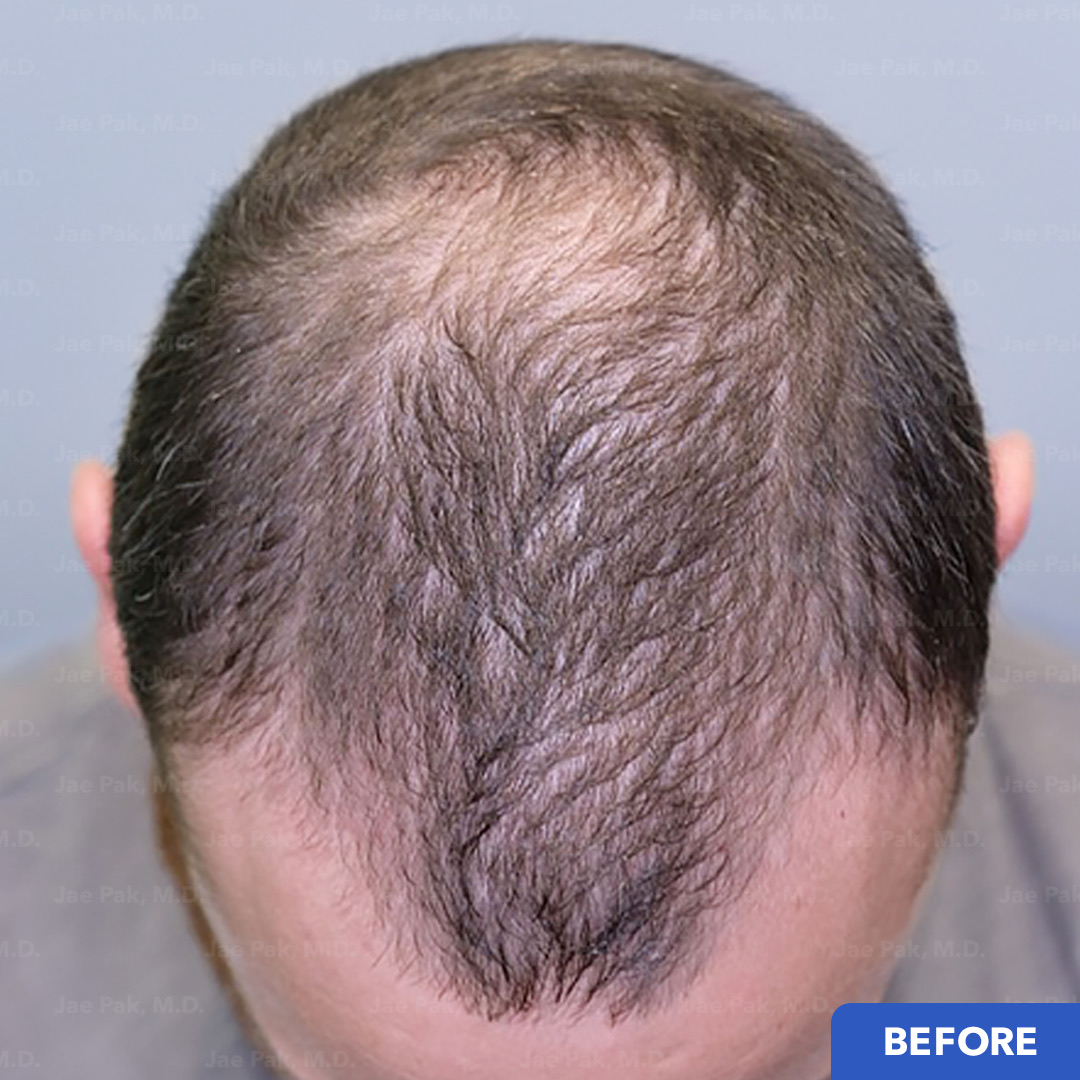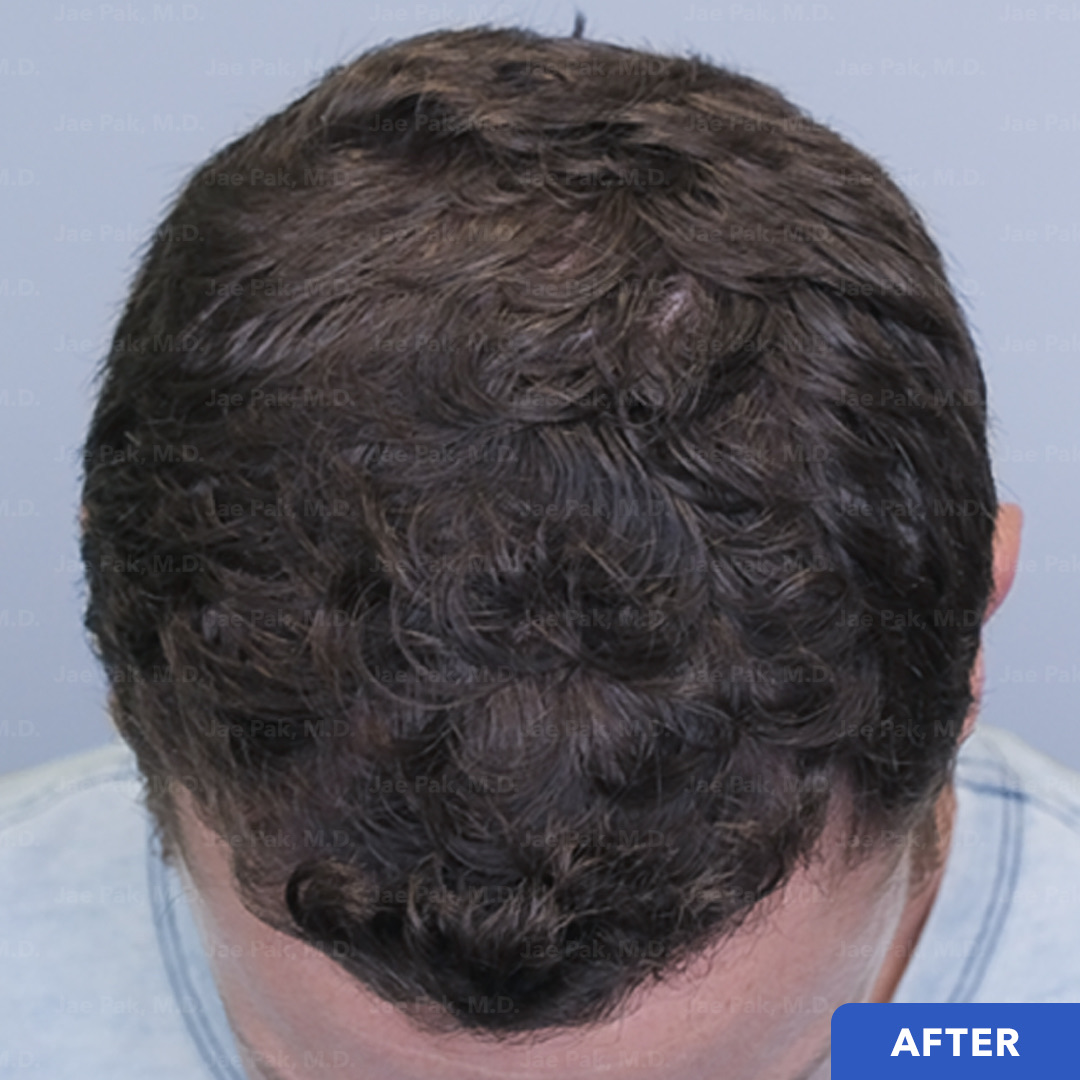FUE vs FUT – A Comparison of Hair Transplant Methods
Main Types of Hair Transplant
Often, our patients will ask about the difference between the two types of Hair Transplants. There are two main types of hair transplants:
- FUE procedure which stands for follicular unit excision.
- FUT surgery or FUSS which stands for follicular unit transplant or follicular unit strip surgery.
The main differences between the two methods deals with how the hair is “excised” from the donor area. The final result for a Hair Transplant should look natural, regardless of the method chosen. In this article we’ll break down the differences in the two procedures

FUE – Follicular Unit Extraction
During this type of hair transplant, the surgeon cuts the hair follicles out directly from the back part of the patient’s head by doing thousands of very small punch incisions that are the size of dots.
The doctor uses either a needle or a tiny blade to create holes all over the recipient site. Then, he or she fills those areas with the hairs taken from the donor site. In one single session, an expert could transplant hundreds, if not thousands, of different hairs.
FUT – Follicular Unit Transplantation

During this procedure, the doctor uses a scalpel to cut a small part of your scalp skin. Usually, surgeons make this incision around the back of your head. The length of the incision is approximately 6 inches. Before going on to the next step of the process, the doctor stitches or staples and closes the incision.
Then, the surgeon will remove and separate small sections from the removed strip using a sharp surgical knife and a microscope/magnifying lens. This way, when inserted into the recipient site, these tiny parts of follicles will help you achieve a natural look, once the hair grows back.
Jae Pak, M.D. is here to help
Can’t decide between FUE and FUT? Schedule a free in-person or virtual consultation with Dr. Pak to get the best solution for your needs.
Request a Consultation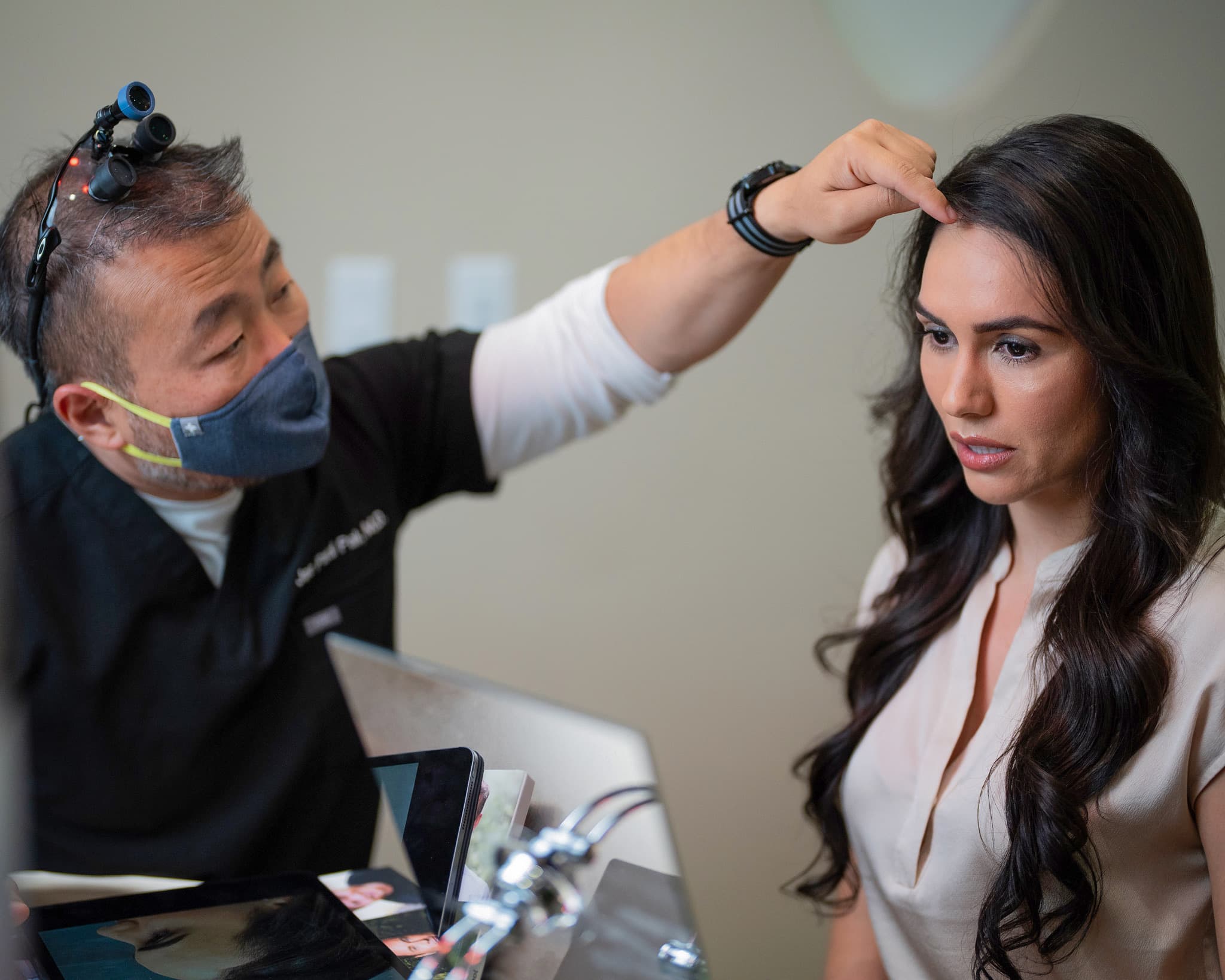
What Are the Pros and Cons of Both FUE and FUT?
Both hair transplants procedure types are safe and generally painless during the procedure. Some soreness is normal right after the surgery, but that will pass in just a couple of days. The recovery time is quick after hair transplantation. You can return to work after only 2 to 5 days post-operation, with little visible signs that a procedure was performed.
In a couple of weeks after surgery, all the newly-transplanted hair will fall out just to make room for new growth, but you must have a little patience because this entire process will take a 9-12 months to show the full results of your procedure.
FUE Pros
- With the FUE hair transplant, patients will avoid linear scars.
- FUE generally has lower postoperative pain than FUT.
- You can wear your hair any way you want, even cut it very short because there won’t be a linear scar showing.
- In some cases, with FUE, the donor site heals a bit quicker than with the FUT procedure.
FUE Cons
- There will be numerous tiny dot scars at the back of your scalp but once your hair grows back, no one, not even you, will typically notice them.
- FUE comes with more transection compared to FUT.
- Because of the transection, the growth rate might be a little slower.
- You will need to shave your head or at least the areas where the doctor will work on before the surgery.
FUT Pros
- Has a better growth rate compared to the one of FUE
- The stereo-microscopic dissection is so precise that the follicle damage is minimal
- Patients don’t have to shave their heads before the surgery
- Usually, a FUT procedure is less expensive than FUE surgery.
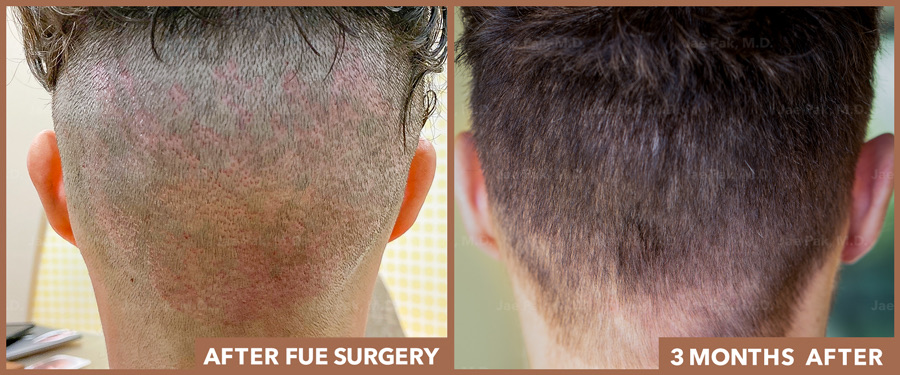
FUT Cons
- After the operation, patients will be left with a linear scar, but it generally won’t be visible because it will fade away after a while and it will be hidden within the hairline
- If you want to cut your hair very short, the scar will become visible, so you should avoid using the #1 guard of your razor – this generally isn’t a problem because once you enjoy hair regrowth, you won’t want to have very short hair ever again.
- In some cases, FUT can be a little more painful right after the surgery than FUE – both procedures are safe, and they aren’t that painful, but pain is a highly subjective concept, each patient experiences it in a different way.
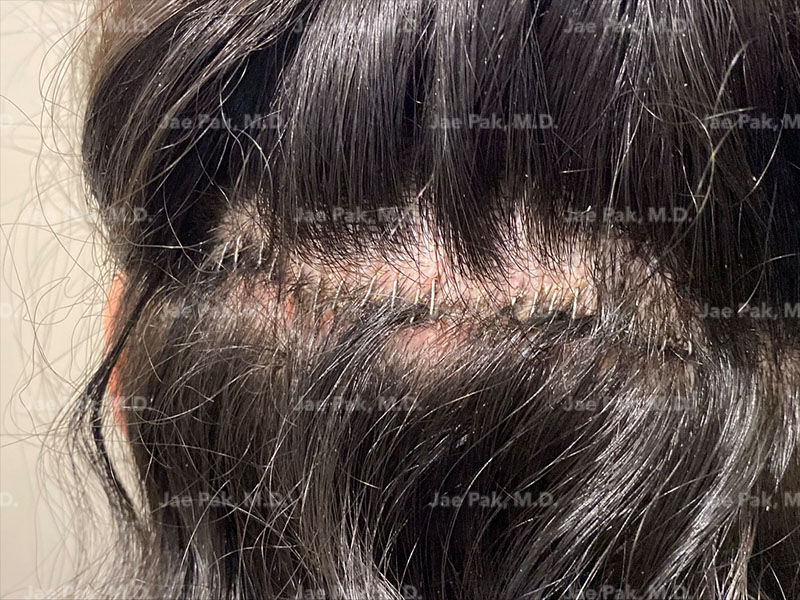

In summary, both FUE and FUT are effective for restoring the appearance of a normal hairline and a full head of hair.
Is the quality of an FUE graft different than an FUT graft?
At Jae Pak MD Medical, each individual graft is inspected for quality control under special microscopes. Only good quality hair grafts are transplanted, whether the hairs come from the FUE or FUT procedure.

Who will be performing my surgery?
At Jae Pak MD Medical, your surgeon will be harvesting the FUE grafts and creating the sties for the grafts to be implanted. Experienced, well trained, full time medical technicians will prepare the grafts under special microscopes and implant the grafts based on the incision sites Dr. Pak creates.

You should always ask your surgeon about their experience and who will be performing the aspects of your surgery.

FUE Hairline and Beard Transplant Results
Find out if a Hair Transplant is right for you.
Speak with Jae Pak, M.D. today!
Request a Consultation